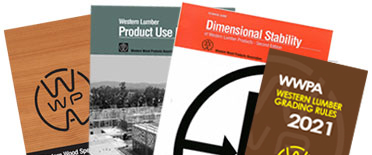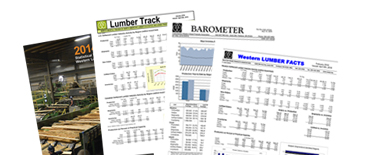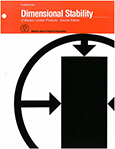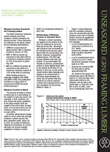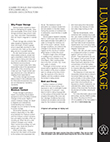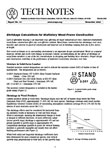
Dimensional Stability
Wood is one of our most important building materials. We live in wood houses, work in wood buildings, utilize wood furniture and enjoy the beauty and warmth of wood. Many people work with wood for a livelihood or as a hobby because of its unique features, abundance and the renewability of the forests from which it is derived. Wood is used in many forms throughout the world; however, few people fully understand its properties.
Wood possesses many excellent qualities, but it also has certain characteristics which must be understood and considered for optimum application. One of these is its hygroscopicity, which causes change in some properties due to the moisture absorption and desorption.
Wood, composed mainly of cellulose and lignin, shrinks as it dries and swells as it absorbs moisture. Dimensional changes generally take place from 0% to 30% moisture content (M), based on its oven-dry weight. In a dry atmosphere, wet or "green" wood loses moisture in the form of water vapor. Dry wood, on the other hand, absorbs moisture from a humid atmosphere; the moisture content of wood also may be increased by wetting with liquid water. If wet wood is put into place, it eventually dries to a moisture content in equilibrium with the surrounding air -- the equilibrium moisture content (EMC). This drying is accompanied by shrinkage. If wood has been dried too far below the moisture content reached in use, it absorbs water until the equilibrium moisture content is achieved and swelling results.
Wood is also anisotropic, i.e. its properties differ according to the direction of measurement. Unless there is abnormal wood, such as juvenile wood or compression wood, shrinkage is greatest in the tangential direction of the annual growth rings. Corresponding shrinkage is approximately one-half as much radially across the rings, and minimal (between 0.1% and 0.2%) longitudinally along the grain. Because longitudinal shrinkage is negligible for most uses, it is generally not considered when the effects of shrinkage are analyzed in wood building design. Many variables affect dimensional change. Shrinkage values differ not only for different wood species, but also between and within trees of the same species. Shrinkage also may vary slightly depending on the drying conditions: low or high temperatures, rapid or slow drying, or drying with or without restraint.
There is no completely adequate explanation of the anisotropic properties of wood because of the complexity and diversity of wood structure. Research has shown that many mechanisms act simultaneously.
Acclimating or drying wood products to the moisture content best suited to the intended use conditions, before placing the wood into service, will eliminate most problems. Drying, either in kilns or air-drying yards, is often a critical step in manufacturing lumber. Proper drying reduces drying defects.
A more complete discussion of moisture in wood for Western species can be found in the WWPA publication Dimensional Stability.
There are many instances where building designers and lumber users need a quick reference tool to help estimate shrinkage in their wood projects. For most structural applications, the common approximation is that wood shrinks 1 percent in the cross-sectional dimension for every 4 percent moisture content (M) change.
WWPA developed the Lumber Shrinkage Estimator in cooperation with Oregon State University. This Microsoft Excel-based program features an easy-to-use form to estimate shrinkage by selecting the Western species group, starting moisture content, ending moisture content for product sizes ranging from 1x2 to 24x24. Comparisons can be made between Western species groups for a given product size.
Understanding how moisture and the cellular structure of wood interact, enables designers and end-users to minimize the effects of wood shrinkage for end-use applications. Therefore, it is important that changes in moisture content be understood and considered when they can affect a product or system in which wood is used.

